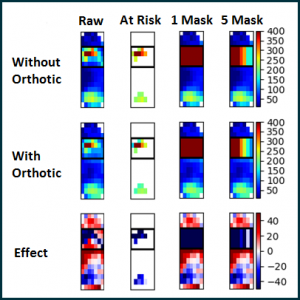The Use of Plantar Pressure Technology in Clinical Practice
Plantar pressure allows clinicians to evaluate risk for their patients and provides a way to measure the outcome of treatments like foot orthotics or footwear in a quantitative way. Multiple projects work toward understanding the benefit and challenges for the implementation of pressure technology in screening and assessment of interventions in the diabetic foot.

Recent qualitative work has explored U.K. Clinicians views of the barriers that may be limiting their use of the pressure technologies. This identified six themes which influence plantar pressure use: 1. the importance of training and education in clinical implementation of plantar pressure, 2. providing evidence for the NHS to prove the benefits of PP, 3. Time and space, 4. Allocated time, space and staff, 5. Specific triage, 6. Cost. Further work explores the perception of patient’s related to pressure technology and it’s use in clinical assessment. Concurrent with the clinical implementation of the hardware is the usability and applicability of the software. We are undertaking work exploring the aspects of data analysis associated with pressure technologies to determine which analysis approaches provide clinically meaningful results. Our work identifies that an approach using discrete sensor analysis as opposed to regions of interest may enable better detection of change post intervention and assessment of orthotic effectiveness. This complements a movement in the scientific field promoting more data-rich high-resolution approaches to pressure analysis.
Drawing these themes together, a part-industry (XSENSOR) funded PhD within the CDT will aim to co-design (with clinicians) and deliver a package to support the global use of plantar pressure in referral and determining effectiveness of orthotics for the diabetic foot. It will address the need for better criteria, develop an evidenced-based training package and evaluate on-going work against the NICE evidence standards framework for digital health technologies.
Funders
XSENSOR and EPSRC funded Centre for Doctoral Training
Team